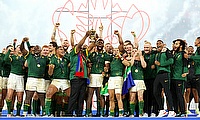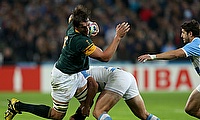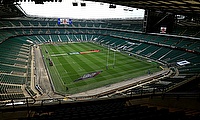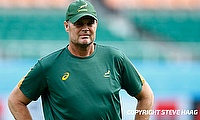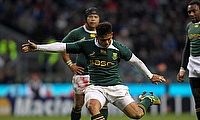Springbok midfield needs its bite back
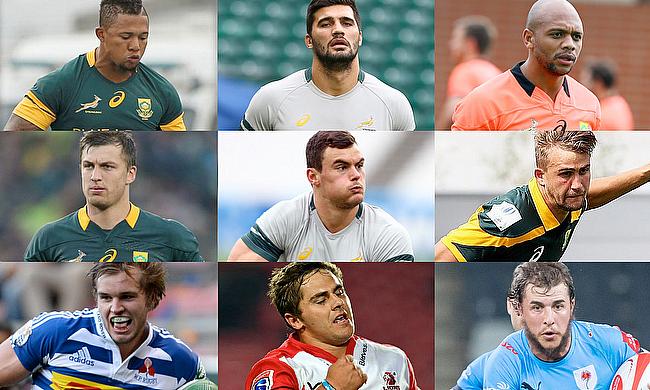
Springbok midfield contenders
©TRU
Nothing sparks a debate on social media like the composition of a South African midfield.
It creates passionate opinions, most of which can be attributed to two very contrasting schools of thought that lead the way.
The first is to play a ‘second playmaker’ at inside centre, thus alleviating the pressure on the fly-half to make all the plays himself and also help bring in strike runners further out in the back line. These ‘secondary playmakers’ tend to have experience playing at fly-half and often provide second kicking options also, something which is handy from a tactical kicking perspective. Current struggles aside, Australia are probably the best example of this style, with players like Tim Horan and Matt Giteau shining in the role.
Then there are the teams who opt for a thumper running outside the fly-half. Inside centres rarely have much space to work in and having a physical specimen run down the throat of a defending fly-half can have plenty of benefits, not to mention the bonus of having that centre draw defenders to him and create space in wider channels a phase or two down the road. Wales and Jamie Roberts are one of the strongest proponents of this approach currently, whilst South Africa have also used it proficiently down the years.
Arch-pragmatists New Zealand have utilised both styles to good effect, shifting from playmakers like Aaron Mauger to physical forces like Ma’a Nonu as and when time, situation and personnel suit. The latter developed one of the best all-round skill sets in test rugby as he matured and showed that both styles are not necessarily mutually exclusive. England’s Owen Farrell and Ireland’s Robbie Henshaw are two players trying to walk similar paths at the moment, developing from playmaker and runner respectively, into two of the best dual-threat inside centres in test rugby.
These differing approaches at inside centre can have significant knock-on effects for the players inside and outside of the 12 and given that they are in direct contact with the fly-half and outside centre for the vast majority of the game, their selection and the resulting balance with the rest of the midfield can make or break a game plan.
So, where do the Springboks, just a few short months in Allister Coetzee’s reign as coach, go with their midfield?
The current trio of Elton Jantjies, Damian de Allende and Lionel Mapoe has had its moments against Ireland and Argentina, but is yet to convince the rest of the world that, although three very talented individuals, they are an all-conquering combination.
Coetzee’s hands are tied somewhat by the injury to Handré Pollard, which has thrust the instinctive attacking abilities of Jantjies to the fore. It’s been a mixed bag for the young Lion so far, with his attacking play certainly creating opportunities for the Boks (quite a few of which have been butchered), but his defence and tactical kicking have come under the spotlight for the wrong reasons. Improvements in these areas will come with time and experience - just look at Beauden Barrett and George Ford – and until Pollard returns, Jantjies is the best option Coetzee has. Once Pollard is back, the two will provide the contrasting styles and abilities - and thus tactical versatility - that most coaches would want from their top two fly-halves.
Put aside the inside centre position for a second, leapfrog out to 13 and again, the situation is fairly straightforward. Mapoe was the best outside centre in South Africa this season by a comfortable distance. It’s been a problem position for the Springboks for a while now and though Mapoe is playing well at the moment, it’s a dangerous situation to be relying on the health and form of a single player. Jesse Kriel, despite shining at 13 as an age-grade player, has looked more effective at full-back as a senior, whilst Juan de Jongh has flirted with the Boks for years, always filling in admirably when required but without making the jersey his own. Young stars like Jeremy Ward and Burger Odendaal could make concerted pushes for the jersey over the coming years but for now, barring a move for an inside centre to 13, it’s in Mapoe’s possession.
One inside centre who could make that transition is de Allende. He is one of the most talented players in South African rugby but has struggled of late to put his stamp on the game as the second receiver in the Springbok back line. The extra space he would find at outside centre would suit his proficient footwork and change of pace in particular. He has the ability to take on his opposite number at 13 and beat him on the outside, potentially creating two-on-ones with the opposing winger. His defence is bemoaned in some quarters and described as too much of a risk at outside centre and if that is the case, he can be shuffled back inside when defending. Australia have been ‘hiding’ players in defence for years now and, for the most part, it hasn’t cost them.
De Allende’s skill set is very similar to England’s Jonathan Joseph, who has nine international tries in the last 18 months, and there is no reason why the South African couldn’t offer the same attacking threat and try-scoring ability further out in the line, just as Joseph has done since being brought into the England team. At inside centre, de Allende is a good player. At outside centre he could be a great one.
Then you come to the thorny issue of who to partner with Jantjies and Mapoe in the 12 jersey. If Coetzee (and the Stormers) aren’t open to moving de Allende to outside centre, many will demand he plays at 12, given that the attacking skill set he brings is too good to be left out. It’s a valid argument but not one that is necessarily going to help define how the Springboks want to play over the coming years.
He isn’t going to break tackles and create holes like an archetypal thumper would and he isn’t the second fly-half in the line that will create opportunities on the gain line with his distribution. He is a finisher and a potent attacking weapon in the open field.
One option would be to recreate the Lions midfield at test level, bringing in Rohan Janse van Rensburg at the position. He would bring punch and power to the Springbok midfield, giving the back line the front foot ball that it needs to excel. Jantjies is creative and instinctive enough to run a back line proficiently without another playmaker outside of him and he’s proven that at the Lions this season (albeit at a lesser level than test rugby). The ability to break a tackle and draw one or two more defenders to you is going to create just as much space as any well-timed play on the gain line, and van Rensburg could deliver that.
When Pollard returns – should he win back the starting fly-half job – picking a playmaker at 12 may be more important. He’s not necessarily as fluent offensively as Jantjies, delivering more with his defensive work and game management skills, and having that outlet outside of him could be beneficial. Unfortunately, playmaking inside centres are in short supply in South Africa right now.
Young Daniel du Plessis at the Stormers may be the most impressive, but with the Cape Town franchise choosing to use him at 13 in Super Rugby, outside of de Allende, his case is not being helped. That said, he is a candidate to be fast-tracked into the senior set-up, even if Coetzee doesn’t think he’s ready for test rugby.
The likes of Steve Hansen and Eddie Jones are big proponents of including younger players in expanded senior squads in order to help their development. It’s an approach Coetzee could benefit from employing. Without the emerging du Plessis, the closest players South Africa have to those secondary playmakers are de Allende and Jan Serfontein, and whilst both gifted players, neither are at their best in that role.
There is of course a case for patience being a virtue in regards to current midfield of Jantjies, de Allende and Mapoe, but the balance feels off. If you can guarantee this trio front foot ball on every phase, it will excel, but based on the performances of the Springbok pack recently, that is not a given and certainly not when they play some of the bigger and more dynamic packs in world rugby.
The time could be nigh to try out van Rensburg in the 12 jersey and see if he can bring back some of the bite and punch that the South African back line is missing.


